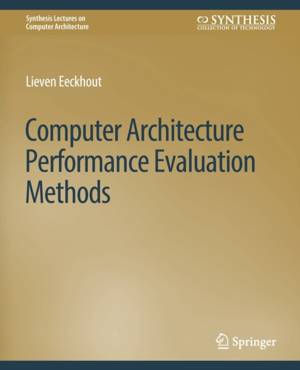
- Afhalen na 1 uur in een winkel met voorraad
- Gratis thuislevering in België vanaf € 30
- Ruim aanbod met 7 miljoen producten
- Afhalen na 1 uur in een winkel met voorraad
- Gratis thuislevering in België vanaf € 30
- Ruim aanbod met 7 miljoen producten
Zoeken
Omschrijving
Performance evaluation is at the foundation of computer architecture research and development. Contemporary microprocessors are so complex that architects cannot design systems based on intuition and simple models only. Adequate performance evaluation methods are absolutely crucial to steer the research and development process in the right direction. However, rigorous performance evaluation is non-trivial as there are multiple aspects to performance evaluation, such as picking workloads, selecting an appropriate modeling or simulation approach, running the model and interpreting the results using meaningful metrics. Each of these aspects is equally important and a performance evaluation method that lacks rigor in any of these crucial aspects may lead to inaccurate performance data and may drive research and development in a wrong direction. The goal of this book is to present an overview of the current state-of-the-art in computer architecture performance evaluation, with a special emphasis on methods for exploring processor architectures. The book focuses on fundamental concepts and ideas for obtaining accurate performance data. The book covers various topics in performance evaluation, ranging from performance metrics, to workload selection, to various modeling approaches including mechanistic and empirical modeling. And because simulation is by far the most prevalent modeling technique, more than half the book's content is devoted to simulation. The book provides an overview of the simulation techniques in the computer designer's toolbox, followed by various simulation acceleration techniques including sampled simulation, statistical simulation, parallel simulation and hardware-accelerated simulation. Table of Contents: Introduction / Performance Metrics / Workload Design / Analytical Performance Modeling / Simulation / Sampled Simulation / Statistical Simulation / Parallel Simulation and Hardware Acceleration / Concluding Remarks
Specificaties
Betrokkenen
- Auteur(s):
- Uitgeverij:
Inhoud
- Aantal bladzijden:
- 132
- Taal:
- Engels
- Reeks:
Eigenschappen
- Productcode (EAN):
- 9783031005992
- Verschijningsdatum:
- 26/05/2010
- Uitvoering:
- Paperback
- Formaat:
- Trade paperback (VS)
- Afmetingen:
- 190 mm x 235 mm
- Gewicht:
- 267 g

Alleen bij Standaard Boekhandel
+ 59 punten op je klantenkaart van Standaard Boekhandel
Beoordelingen
We publiceren alleen reviews die voldoen aan de voorwaarden voor reviews. Bekijk onze voorwaarden voor reviews.











